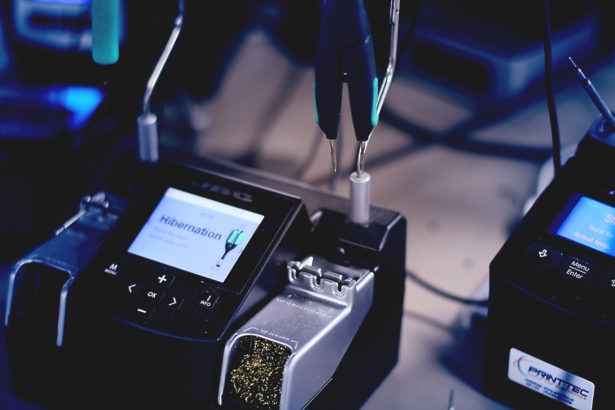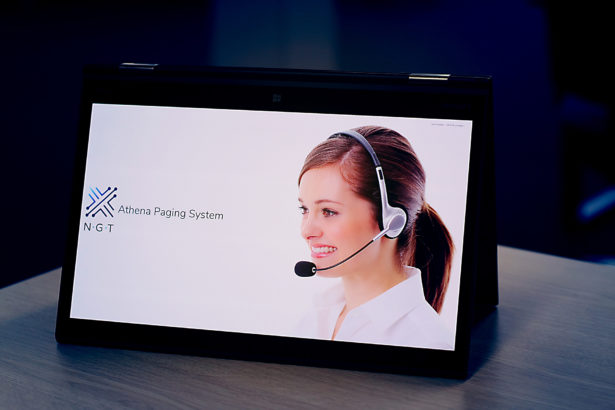The future
of
paging
The future of paging
Since the introduction of smart phones, the classical pager has obtained a reputation of being old fashioned. Some say that the classical pager is dead and will be replaced by smart phones. We at Pager Services have a different view on this and are committed to show that paging is very much alive.
Of course we cannot deny that developments in smart phones quickly surpassed the developments in pagers in the recent years. However, smart phones are developed with a completely different customer in mind. Therefore it has a focus more aimed at speed, many fancy features, looks, camera quality and so on. Because of this and the target market the lifespan is short (typically 2 years). The pager on the other hand is designed to be as robust, simple and reliable as possible. It therefore has a lifespan of over 10 years which is typically important to our customers. This also holds for the communication of these devices: 4G and WiFi are developed for speed and higher speed versions arise almost every year. Paging communication (VHF/UHF) is aimed at range and availability. Two different communication solutions for two different customer needs. Sure, there are some smart phones designed for robustness but they are still based on operating systems designed for consumer markets and the communication is still limited to 4G and WiFi.
We can also not deny that the needs of our customers are changing too. Being used to the fact that everyone is available through a smart phone with global coverage the pager seems indeed old fashioned. While for example professional care is shifting from dedicated institutions to the clients home there arises a need for global coverage of the pager too. The use of advanced equipment is also growing in all markets, from healthcare to industry to transportation. Next to monitoring a persons safety there also arises a need to monitor the state of this advanced equipment in order to prevent hazardous situations for the people using the equipment or people relying on the equipment. Think about infusion pumps, oxygen meters, but also manufacturing equipment, autonomous vehicles driving on large industrial sites and so on. In many of these applications the reliability and service level is of critical importance and therefore most existing Internet-of-Things (IoT) solutions are insufficient.

Service
Service is also an important factor. While most smart phone and current IoT solutions are aimed at the convenience of consumers, our customers need to operate 24/7 without interruption and often the lives of the end users depend on the communication systems. Besides reliability of the product the level of service and support provided is also critical. At Pager Services this is at the core of our business and all new products are designed with serviceability in mind.
Given the growing gap in user experience between smart phones and pagers, the changing needs of our customers and the continuing need of high service levels, we are convinced that the solution is a next generation pager that combines the best of both worlds. The latest communication technologies combined with the highest reliability and availability in a new modern jacket. Designed specifically to suit the needs of our customers. This article shows a glimpse of the future.

Global paging
The next generation pagers will have national or even global coverage using LTE/4G/5G communication. It will also have global positioning using GPS. With the increasing availability and coverage of global networks many applications will benefit from this technology being able to leave the buildings covered by the classical local infrastructure. As a backup for hard to reach areas or when the global network (partly) fails a local UHF communication backbone will also be supported. These different communication technologies need to be seamlessly integrated into the pager such that the end-user does not notice whether the message comes from a local or global source.
5G
With the introduction of 5G networks a slightly different approach is followed. Besides the high speed network a low speed, high availability network is part of the 5G specification. This sub part is specifically interesting as providers might be able to give guarantees on availability. Of course we will update our global pagers to support 5G when the networks become widely available.
Serverless and infrastructureless communication
The current UHF communication of pagers is based on a star architecture; one server controls all equipment and communication. The fact that everything is controlled from one point results in a weak spot. If the central server fails, all communication is down. In critical situations this problem is handled by putting an extra server in the system as a backup. But this also needs to be done with other critical parts in the system, such as cabling, transmitters, receivers and so on. Building such a redundancy is complex and expensive.
The next generation UHF communication works in a different way, like a mesh network. Every piece of equipment is a node in the mesh and operates independently. All server intelligence is distributed over the nodes. This results in a more robust communication since there is no single point of failure.
You can take out any node and the other nodes will continue working. Even if all equipment is defect and only two pagers are left, one pager can still receive alarms from the other pager. Note that all kinds of sensors could also be included in the mesh network; it will not be limited to pagers. This level of flexibility and redundancy is impossible in a star architecture. It also saves the cost of a central server which is especially desirable in small setups with only a few pagers.
The mesh structure also removes the need for hardwired infrastructure. Simply put in repeater nodes in the mesh network and the range is extended. Extension of the system is also easy; add another node and you are ready. This architecture saves installation costs and maintenance costs since 24/7 support is not necessary anymore. The system cannot be down completely and if a node is malfunctioning it will generate a technical alarm. Until it is replaced all other nodes will function normally. Besides this new UHF communication, the next generation pager will also be able to operate with classical star-based architectures to be backward compatible.

User experience
There has been a lot of research on the user experience of smart phones. Large smart phone companies invested millions in optimizing the menu structures, graphics and other user controls. The next generation pager must have an easy to use and intuitive user interface that makes it easy to scroll through old messages and see the content and importance of different types of messages it receives. By updating the user experience of a pager the gap between smart phones and pagers should be decreased. Of course the pager does not need to have all fancy user interface possibilities of a mobile phone but it must be more user-friendly than current pagers to get accepted. This also means that more effort must be put in the design of the housing, both functional (water proof, shock proof) and aesthetically.
We believe that the presented next generation pagers provide a modern solution for our customers critical communication needs. We plan to extend our product portfolio to include machine communication equipment based on the same principles serving the Industrial-Internet-of-Things market (IioT). At pager services we are committed to develop the next generation communication equipment that will fulfill all future communication needs.
At Pager Services we are committed to develop the next generation communication equipment

DP7000 explained
DP7000 is the new mesh based communication structure developed by Pager Services.
Read More >>

Frans Kanters: “Freedom and space are essential for creativity and innovation”
An interview with the new technical director of Pager Services.
Read More >>

Development roadmap 2022/2023
The development roadmap of Pager Services for 2021.
Read More >>